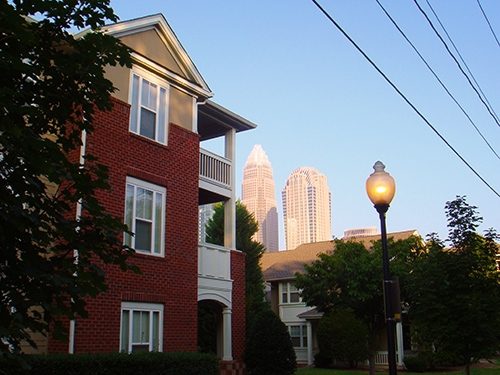Stick to basics in affordable housing strategy

As Charlotte’s real estate market continues to recover from one of the worst economic downturns in modern times, it might be easy to assume that housing affordability is no longer an issue of great concern. But in south Charlotte and other highly desirable parts of Mecklenburg County, home prices continue to remain out of reach for some of our most critical public servants, as well as for many in the private sector. When schoolteachers, firefighters, police officers and other municipal employees can’t afford to buy a home in the community where they work, our social fabric gets a little thinner – and we all pay a price in increased traffic, worsening air quality and lost productivity.
Since last summer, the City of Charlotte has convened a task force of neighborhood representatives, developers and affordable housing advocates to come up with a package of voluntary incentives to spur the construction of housing priced for families making less than 80 percent of our area’s median annual household income, currently $54,000.
The proposal’s key component is to use a density bonus. In any areas of the city zoned for single-family housing between 3 and 6-units per acre where there’s a median home value of $153,000 or higher, a developer could build 3 more units per acre if half the additional houses were more affordable. No rezoning would be needed.
This additional density is essential if an inclusionary, or mixed-income, housing development is to make sense financially to a developer. As opposed to a public subsidy program that artificially brings the price of a home within reach of the targeted buyer, a density incentive gives the developer the opportunity to build market-rate housing that can be sold for less because it has less square footage, a smaller lot, and less expensive interior amenities.
Members of the Real Estate and Building Industry Coalition (REBIC) have been actively involved in the city’s Voluntary Incentive-Based Inclusionary Housing Task Force since its inception. We are encouraged by progress the group has made to this point. In addition to the density bonus, additional policies have been proposed to increase the supply of duplexes and accessory dwelling units (such as garage apartments and carriage houses) throughout Charlotte, and to speed up plan review and permit approval to further incentivize the construction of affordable housing.
As the task force wraps up its work on a single-family incentive package, we believe it is important for the group to keep in mind the charge given by the Charlotte City Council: to propose a policy to encourage the private sector to increase the supply of more affordable, workforce housing in submarkets where it is in greatest need.
But while this policy may achieve desirable social goals, it should not be viewed as social policy in and of itself – and any attempt to move in this direction could dampen any real incentive for developer participation.
So though it may be a laudable social accomplishment to create neighborhoods where $130,000 homes share a street with others priced around $300,000, it is equally worthy for those same homes to share a central parkway and an amenity area in a master-planned development. The result would be a cohesively designed community offering workforce housing choices in an area of town where such opportunities are fast becoming extinct. The city’s policy doesn’t need to do any more than this to achieve its goal.
In the same respect, the city achieves its goal of putting homeownership within greater reach when a private home builder sells workforce housing to buyers who qualify under the policy’s income targets. Because these homes would be built and sold at market price, without public subsidies, the city can’t restrict their future resale to buyers meeting specified income qualifications. Doing so would deprive the new owners of the wealth-building benefits of homeownership and undermine the appeal of a voluntary inclusionary housing incentive program for the private sector.
These three programs alone won’t solve the housing affordability problem for everyone. But they can be effective tools to chip away at the problem for a specific income group. Several other recommendations of the Housing Charlotte 2007 Committee, aimed at helping provide housing for residents earning less than 60 percent of median household income, still haven’t had their hearing by City Council.
In coming months, we hope the Charlotte City Council will see the value of adopting a straightforward package of voluntary incentives that helps produce quality workforce housing for our neighbors who need it most – the people who teach our children, maintain our communities, and keep our streets safe.
Joe Padilla is executive director of the Real Estate and Building Industry Coalition, a public policy group advocating for the real estate, construction and land development industries throughout the Charlotte region.
Views expressed in this commentary are those of the author and do not necessarily represent the views of the UNC Charlotte Urban Institute, its staff, or the University of North Carolina at Charlotte.